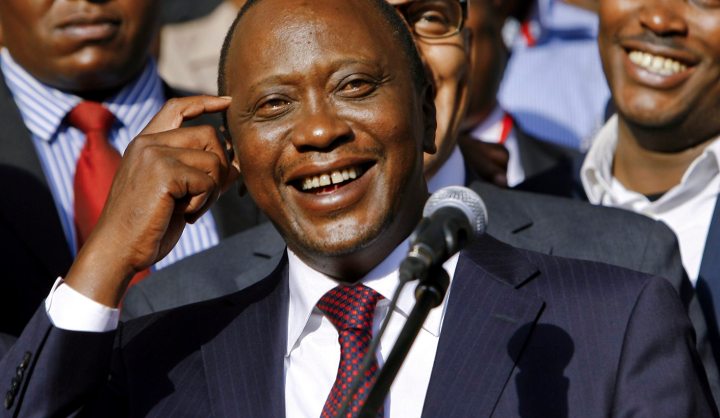Africa
Op-Ed: Kenyan media is being silenced through violence

The mysterious murders of two journalists in Kenya have forced the media fraternity to rethink the notion that the Kenyan Press is indeed free. But while these incidents were shocking, the warning signs have been around for some time. By NJERI KIMANI.
On his last night alive, Joseph Masha had shared a meal with a local politician in Kilifi, a town on Kenya’s coast. Masha was the correspondent for the area for the Standard Group. When he returned home, he complained of a stomach ache, and then collapsed. He never got up again. His family and colleagues believe that he was poisoned.
“My husband died as a result of his work. All I am requesting the government is to investigate this matter to establish what killed him,” said Masha’s wife, Bahati Mwalimu Ramadhan.
Kenyan journalists believe the same. They organised a march last week to protest against Masha’s alleged murder. But then, on the eve of the march, another murder. This time, the victim was Dennis Otieno, a freelance photographer. Three men had entered his home, demanded to see a photo on his camera, and then shot him with an AK-47. They stole the camera, along with his TV and a music system.
Politically motivated murders are not new in Kenya. Two years ago, the Managing Editor of The Mirror, John Kituyi, was hacked to death by a gang who trailed him from work. He was a well-known investigative journalist, and was probably killed for his work.
But recently there has been an upsurge in attacks on the media in Kenya, carried out by government officials, security agents and organised mobs. It is aimed at instilling fear and anxiety in media practitioners, and has the effect of limiting the freedom of expression as many journalists are forced to self-censor.
The following is just a sample of such incidents:
- Nakuru-based journalist Elijah Kinyanjui has been repeatedly detained, allegedly on the instruction of Nakuru County Governor Kinuthia Mbugua.
- In August, Jane Wangechi, a K24 journalist based at the Coast, was recently beaten by nominated Member of County Assembly Monica Njambi in an early morning attack. Wangechi was waylaid on her way to buy breakfast.
- In July, a Media max journalist Moses Masinde was beaten by rowdy youths from the Orange Democratic Movement (ODM), the main opposition, and his camera was vandalized.
- Alphones Gari of The Star newspaper was arrested for taking pictures of first lady Margaret Kenyatta during a public function. He was later released and ordered to leave the grounds or he would be “dealt with conclusively”, forcing all journalists to boycott the function for fear of their lives.
- Shaban Makokha, also with The Star, was attacked at an ODM rally in Shianda Shopping Centre. His cameras were destroyed. The Star, through their Head of Content Charles Kerich, has since threatened to stop giving coverage to ODM in protest.
With the elections drawing near, journalists are becoming easy targets, especially for politicians who are seeking re-election. Journalists are also being dragged into political battles, as politicians often claim that the media are being paid by their rivals whenever negative coverage appears.
The sustained assault on the media brings into question the safety and security of journalists. The delayed prosecution of people responsible for attacks on journalists reinforces the wrong message: that journalists can be silenced through violence.
The government is failing to uphold its responsibilities to journalists. It is the responsibility of the government to bring to account those who violate the freedom of the press, as a sign of their commitment to uphold press freedom specifically, and freedom of speech more generally. The government must ensure that journalists are given a safe environment to practise their trade. It should understand that journalists cannot fulfill their vital democratic role while being assaulted and harassed.
For a country that prides itself on its democracy, this is an embarrassment.
The power of a journalist begins with the tools she uses: a camera, a notebook and pen, a laptop. With these, they set the agenda and highlight issues of national importance. By deliberately destroying their property, political parties are trying to curb the spread of information which they feel does not favour them.
Media houses should also play a greater role in supporting and protecting their journalists. This must include the provision of adequate training on how to cover potentially dangerous situations; proper equipment, such as bulletproof vests and first aid kits; and proper salaries, so that journalists can afford to live in houses with proper security.
Media associations mandated to champion for journalists’ rights must also lobby for policies that protect journalists. The Media Council, The Kenya Correspondents Association and the Kenya Union of Journalists should demand answers regarding the murder and assault of journalists, and threats made towards them.
Finally, journalists should value themselves by placing their security as their first priority. They should practice safe journalism, and realise that no story is worth their lives. DM
Njeri Kimani is a journalist based in Nakuru, Kenya, and secretary-general of the Kenya Correspondents Association. She writes in her personal capacity.
Photo: Kenyan President Uhuru Kenyatta smiles after winning in 2013 Presidential election in Nairobi, Kenya. EPA/DANIEL IRUNGU.














 Become an Insider
Become an Insider